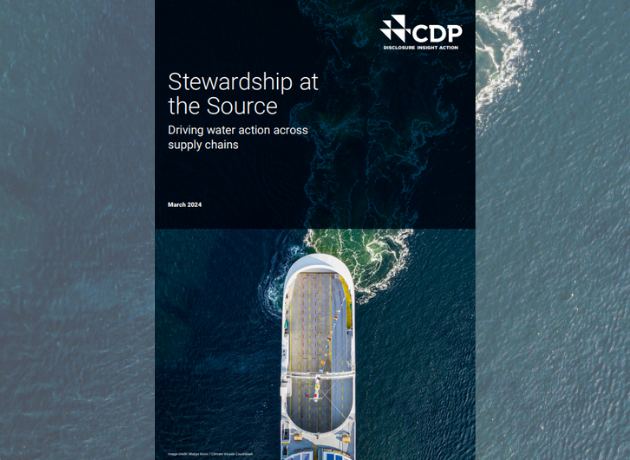
Submitted by sude.figen on August 12, 2024
The CDP Water Global Report 2023 underscores the urgent need for proactive and comprehensive action to address water-related risks and secure sustainable water management within global supply chains. The report highlights the intensifying impact of climate change on water resources, emphasizing the critical role of the private sector in mitigating these risks. Key areas of focus include integrating water risk assessments into supply chains, incentivizing executive action, and fostering collaboration across sectors and borders.
In the 2023 Global Water Report, 20% of companies reported water-related risks within their supply chains, up from 16% in 2021. This increase underscores the growing recognition of water's impact on business continuity and financial performance. Companies that integrate suppliers into their risk assessments are seven times more likely to report supply chain risks, indicating the importance of collaborative approaches in identifying and addressing vulnerabilities.
The CDP Water Global Report 2023 calls for systemic change in water governance, emphasizing the need for ambitious, collective action across all stakeholders. The private sector's role is crucial in driving this transformation, supported by regulatory frameworks and financial incentives.
This report serves as a clarion call for businesses to prioritize water management, integrate water risk assessments into their operations, and collaborate across sectors and borders to ensure a sustainable future for global water resources.
Key Findings
- One in five companies report water supply chain issues that could significantly affect their operations.
- Companies that include suppliers in risk evaluations are seven times more likely to disclose supply chain issues.
- 50% of buyers engage with their suppliers on water.
- Global brands are offering financial incentives to their leadership teams to achieve supply chain water goals.
TÜRKİYE
Companies responding from Türkiye reported that access to sufficient quality water is essential not only for their direct operations (86%) but also for their supply chains (67%), reflecting widespread recognition of water's critical importance across all levels of business operations.Compared to the previous year, 34% of companies reported successfully reducing water consumption, while 33% reported an increase in water withdrawal. This indicates that companies are at different levels of effective water management.
In Türkiye, more companies have become dependent on water sources in areas under water stress or at risk of water scarcity. In 2023, a significant portion of companies (76%) withdrew more than half of their water from sources under water stress, compared to 71% the previous year. In contrast, looking at companies' five-year forecasts, 53% do not anticipate an increase in their current water withdrawal levels, while 26% aim to reduce their water withdrawals from areas under water stress.
Since water use is an issue that transcends company boundaries, some companies can indirectly contribute to water pollution and the depletion of water resources. In Türkiye, most reporting companies (81%) withdraw their water from third-party sources, often discharging the water back into third-party areas (81%). A significant portion (62%) discharges water into third-party areas without prior treatment, while 12% of companies discharge untreated water directly into the natural environment. This situation underscores the urgency for companies in Türkiye to prioritize responsible wastewater discharge management, invest in necessary technology and infrastructure, and ensure that their activities do not harm the environment or public health. A positive development in this area is the increase in the percentage of companies reporting that they treat water before discharge, compared to the previous year (48%).
In Türkiye, the potential financial impact of identified water risks on direct operations is valued at $2 billion. In contrast, the potential financial return from opportunities is reported to be $6.3 billion. This means the potential financial return from water-related opportunities is three times higher than the costs that water risks could incur. Additionally, the estimated cost of investments required to address these identified risks amounts to $1.7 billion. These investments include adopting water efficiency, water reuse, recycling, water conservation practices, and investing in new technologies.
Click here to access the report.





